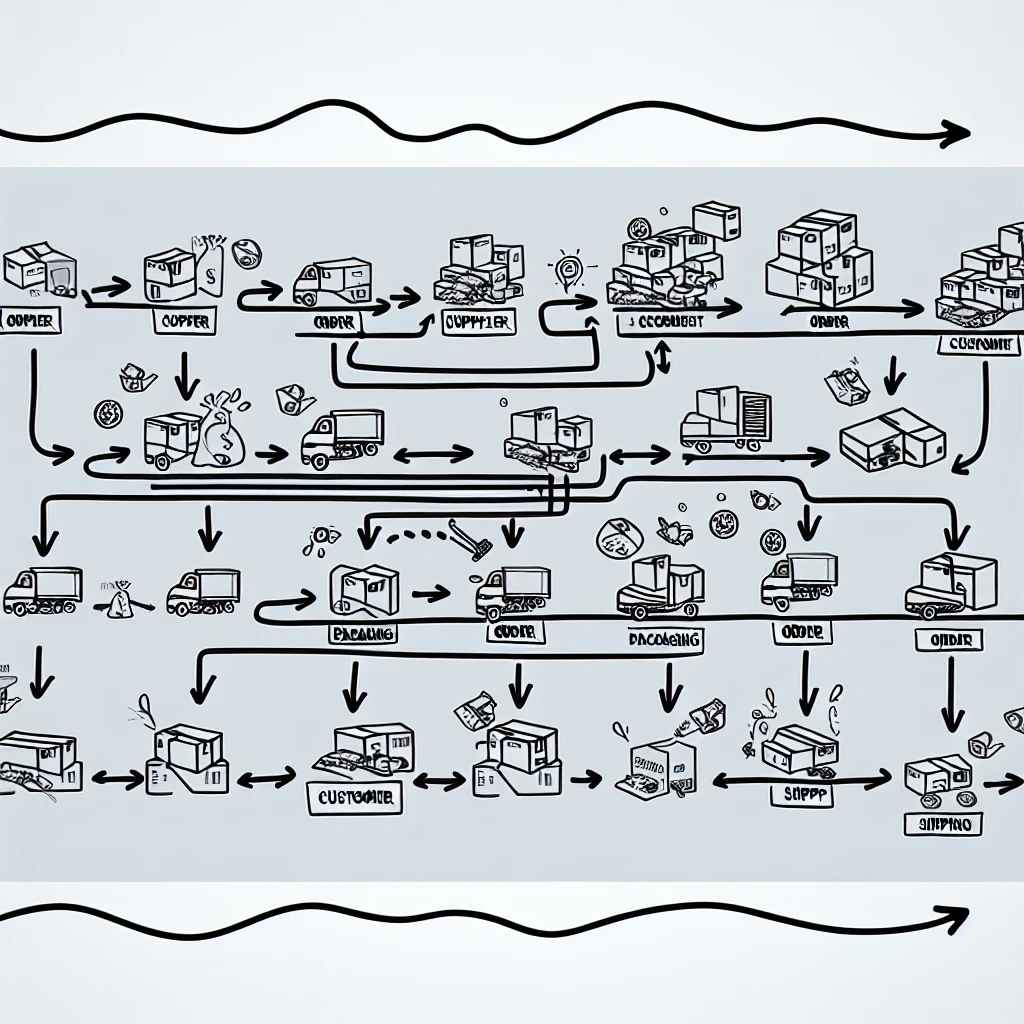Understanding Just-In-Time Inventory
In the bustling world of ecommerce, managing inventory can be akin to a high-wire act, where balance is critical, and missteps can be costly. Enter the Just-In-Time (JIT) inventory system, a methodology that aligns inventory orders with production schedules and customer demands, minimizing the need for excess stock. This lean approach to inventory management, originally popularized by Toyota in the manufacturing sector, has since been adapted by ecommerce businesses seeking to optimize their operations.
At its core, JIT is about efficiency and responsiveness. By ordering goods only as they are needed, companies can reduce the costs associated with overstocking, such as storage fees, wasted products, and tied-up capital. This is particularly advantageous in the ecommerce space, where consumer trends can shift rapidly, and products can quickly become obsolete. A JIT strategy enables businesses to pivot swiftly, adapting their inventory to current market demands without the burden of unsold goods.
However, implementing JIT in ecommerce isn't without its challenges. The system demands precise forecasting and a well-oiled supply chain. Any delays from suppliers can lead to stockouts and lost sales. Moreover, without a buffer of excess inventory, unexpected spikes in demand can be difficult to fulfill. To navigate these hurdles, successful ecommerce businesses often employ sophisticated software tools to analyze sales data, predict customer behavior, and maintain tight control over their supply chain.
Despite these challenges, the benefits of JIT for ecommerce are compelling. It's not just about cutting costs; it's about agility. In a digital marketplace where customer satisfaction is paramount, the ability to deliver the right product, at the right time, without waste, is a competitive edge. As ecommerce continues to evolve, JIT inventory management stands as a testament to the power of lean, adaptive business practices in an ever-changing landscape.
Benefits of JIT for Ecommerce
When online businesses adopt a Just-In-Time (JIT) inventory system, they're not just streamlining operations; they're embracing a strategic advantage that can lead to significant business growth. The benefits of JIT for ecommerce are manifold, touching on cost savings, improved cash flow, and enhanced customer satisfaction.
Firstly, JIT minimizes the capital tied up in inventory. This is a game-changer for ecommerce, where liquidity is often the lifeblood of the business. By purchasing stock in alignment with demand, businesses can invest more in marketing, product development, or even expansion. The reduced need for warehouse space also translates to lower overhead costs, which can be a major boon for businesses with tight margins.
Moreover, JIT can lead to a more dynamic product offering. Since stock levels are closely tied to consumer demand, businesses can quickly introduce new products or phase out underperforming ones. This agility is critical in the fast-paced world of online retail, where trends can come and go in the blink of an eye. By staying on the pulse of market demands, ecommerce businesses can keep their offerings fresh and exciting, which is essential for retaining customers and attracting new ones.
Another significant advantage is the reduction in waste. Overstock can lead to unsold goods, which not only represents a financial loss but can also harm the brand's reputation if the products become outdated or obsolete. JIT's lean approach ensures that products are more likely to be sold while they're still in demand, maintaining the relevance and appeal of the ecommerce store's inventory.
Finally, JIT can enhance customer satisfaction by enabling faster shipping times. With a more efficient inventory system, products can be dispatched more quickly, which is a critical factor in customer satisfaction. In an age where consumers expect rapid delivery, being able to meet these expectations can significantly boost customer loyalty and word-of-mouth referrals.
In conclusion, while JIT requires precision and careful management, the benefits for ecommerce businesses are clear. From financial savings to improved customer experiences, JIT offers a comprehensive set of advantages that can help online businesses stay competitive and thrive in the digital marketplace.
Challenges and Solutions in JIT Implementation
However, the road to JIT success is not without its bumps. Implementing Just-In-Time inventory presents several challenges that can deter even the most ambitious ecommerce entrepreneurs. The most common hurdle is the need for accurate demand forecasting. Without precise predictions, stockouts may occur, leading to missed sales opportunities and dissatisfied customers. The solution lies in leveraging advanced analytics and AI-driven tools that can crunch historical sales data to forecast future demand with a higher degree of accuracy.
Another challenge is developing strong relationships with suppliers. JIT depends on the timely delivery of inventory, and any delays can disrupt the entire supply chain. Building a network of reliable suppliers and maintaining open lines of communication is crucial. Solutions include diversifying the supplier base to mitigate risks and implementing vendor-managed inventory systems, where suppliers are responsible for stock levels.
Inventory management complexity also increases with JIT. The need to constantly monitor and adjust inventory levels can be overwhelming. Here, technology again comes to the rescue. Inventory management software can automate many of the tedious tasks associated with JIT, such as reordering and tracking stock levels in real-time.
Lastly, JIT implementation requires a cultural shift within the organization. Employees must understand and embrace the principles of JIT for it to be effective. This means investing in training and fostering a culture of continuous improvement. Encouraging employee feedback and involvement in the JIT process can lead to better adherence and innovative ideas for further optimization.
While challenges in JIT implementation are real, they are not insurmountable. With the right tools, strategies, and mindset, ecommerce businesses can overcome these obstacles and reap the full benefits of a Just-In-Time inventory system. It's about being proactive, embracing technology, and staying committed to the process. The payoff is a leaner, more responsive, and ultimately more profitable ecommerce operation.







